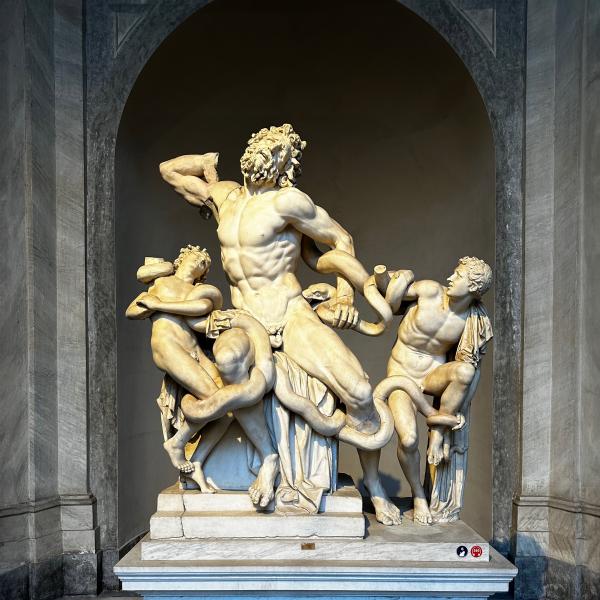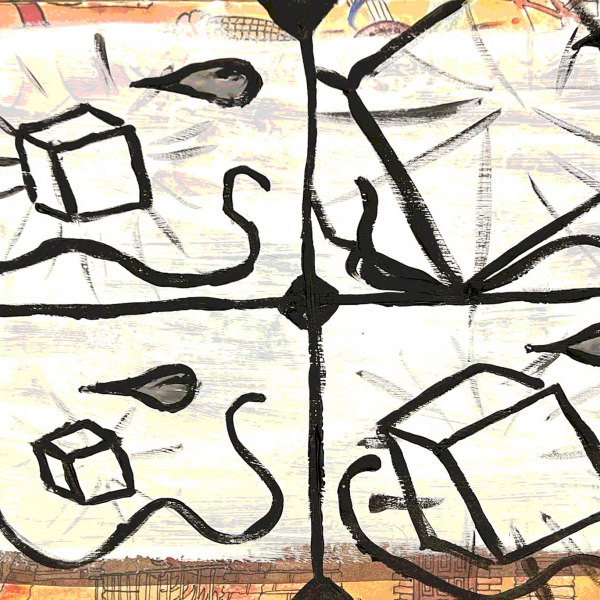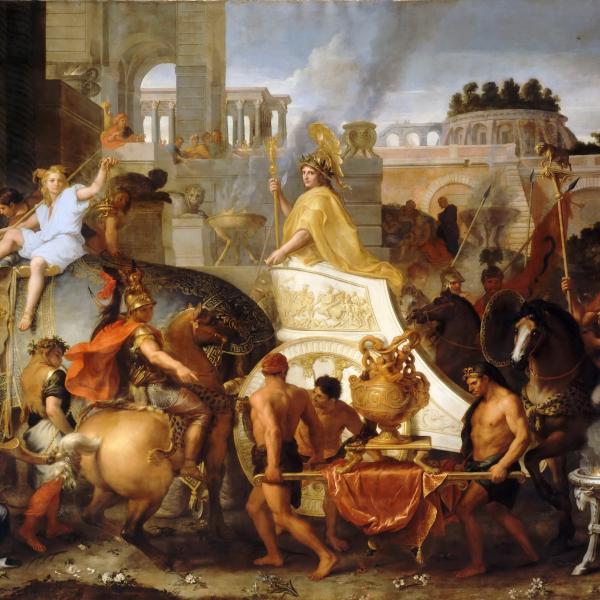Seasonal flooding in China’s urban areas along its waterways is an ancient expectation. China scholar Steven Miles tracks the impact of cyclical events such as wet-season floods and dry-season fires on urban dwellers of the 19th century.
On November 1, 1822, a fire whipped through the southern Chinese city of Guangzhou (Canton), leaving 50,000 people homeless. On April 7, 1883, a visitor to the western Chinese city of Chongqing observed that rising waters of the Yangzi River were forcing residents of “well-built bamboo houses” on the river’s edge to move inland. Tracing the impact of the seasons — such as the fires of the dry autumns and the floods of wet springs — on the urban dwellers of pre-industrial China is the subject of Steven Miles’ latest book project, “City Seasons: The Pulse of Urban Life in 19th-Century China.”
“These two events illustrate the seasonality of urban life in 19th-century China,” says Miles, an associate professor of history and Faculty Fellow in the Center for the Humanities. “In particular, they hint at the relationship between seasonality and urban spatial practice, or seasonal circulations of people within and through cities.”
He continues, “The Guangzhou fire burned the warehouses of European traders who annually arrived in the city in August or September, indicating that the composition of the urban population changed with the seasons. In Chongqing, the physical shape of the city changed with the seasonal movement of poorer urban residents toward the river in the fall and away from it the spring.”
Miles shares a preview of his work-in-progress below.
In a couple of sentences, what do you intend to show with “City Seasons: The Pulse of Urban Life in 19th-Century China”?
At the most basic level, I want to understand the experience of daily urban life in 19th-century China. What were the rhythms of life in late imperial Chinese cities, before the onset of rapid industrialization and revolution at the turn of the 20th century? To what extent were these rhythms seasonal, and to what extent were they characteristically urban?
What prompted you to explore this topic? Does it build on earlier work or is it a new direction for you?
In this project I return to a familiar place, but I explore it with a different set of questions in mind. The subject of my dissertation and first book was a renowned Confucian academy in 19th-century Guangzhou, the Sea of Learning Hall. Accordingly, my early research largely focused on male elites. In subsequent research projects, on Cantonese migration both within southern China and overseas, I turned my attention to a broader range of social actors. Now, combining my interests in urban history and in migration, I want to understand the rhythms of the city in 19th-century China.
Having begun to collect primary sources last summer, I now realize that a study of all three cities might result in a multi-volume project. For now, I will focus on Guangzhou, while keeping the other two cities in mind for the long term.
 Your initial conception of the book focused on three Chinese cities: Hangzhou, Guangzhou and Chongqing. Why did you select them? What are the important similarities and differences?
Your initial conception of the book focused on three Chinese cities: Hangzhou, Guangzhou and Chongqing. Why did you select them? What are the important similarities and differences?
Having begun to collect primary sources last summer, I now realize that a study of all three cities might result in a multi-volume project. For now, I will focus on Guangzhou, while keeping the other two cities in mind for the long term.
I selected the cities strategically. I am very familiar with Guangzhou and the sources for studying it. Long ago I conducted some initial research on Hangzhou, and I have in the past decade cultivated some important kinship links to this beautiful city. During the Qing dynasty (1644–1911), Chongqing was located in one of only four counties (out of more than 1,300!) for which substantial Qing-era county archives are extant. This archive gives us a detailed view of Chongqing that is lacking for other cities.
Another factor in choosing these three cities is their shared feature of being situated on important rivers. This ties in to my second book, Upriver Journeys, on Cantonese migration along the West River basin. At the same time, these three cities are widely distributed across China: Hangzhou on the east coast of central China, Chongqing in the mountainous, western interior, and Guangzhou in the subtropical south. Accordingly, residents of the three cities experienced seasons in different ways.
Briefly, what seasonal patterns have you seen emerge in studying life in these cities?Whereas previous studies of seasonal patterns have emphasized one particular seasonal phenomenon, such as mortality in Berlin, or sheep stealing in Wales, I am interested in understanding how different aspects of seasonality overlapped. For Guangzhou, the main seasonal weather pattern was the distinction between the wet and dry seasons, which were in turn determined by monsoon winds. As one might expect, catastrophic flooding occurred in the wet season, whereas catastrophic fires tended to occur in the dry season. But I am also interested in seasonal patterns that were less clearly related to weather: fertility and mortality, the state ritual cycle, popular festivals, crime and disputes.
What I have found most striking in my initial research is the way in which urban residents of different classes and genders experienced seasonal events in different ways. In addition, different segments of urban society assigned different kinds of meanings to seasonal events. Events such as catastrophic fires and popular religious festivals seem to reveal tensions and relationships among urban residents that otherwise remain hidden.
 What kinds of sources are you using in your research? Are there any documents or sources that are missing that you really wish you had access to?
What kinds of sources are you using in your research? Are there any documents or sources that are missing that you really wish you had access to?
This project has given me a chance to explore new types of sources for understanding urban life in Guangzhou that I did not use in my earlier research. These include government reports on particular kinds of crime (home and shop invasions), stone inscriptions still to be found in Guangzhou today, almanacs printed in Guangzhou, and articles from newspapers. After exhausting these and other Chinese-language sources, I will work on archives of Western medical missionaries who lived in Guangzhou. As for sources that I currently lack, my dream is that a large collection of Qing-era county archives for Guangzhou will be discovered and made available, but I am not holding my breath!




